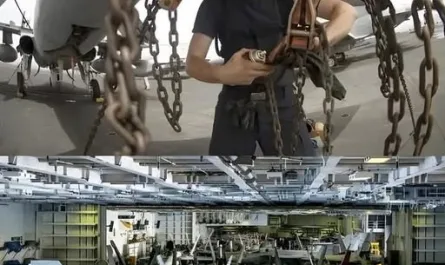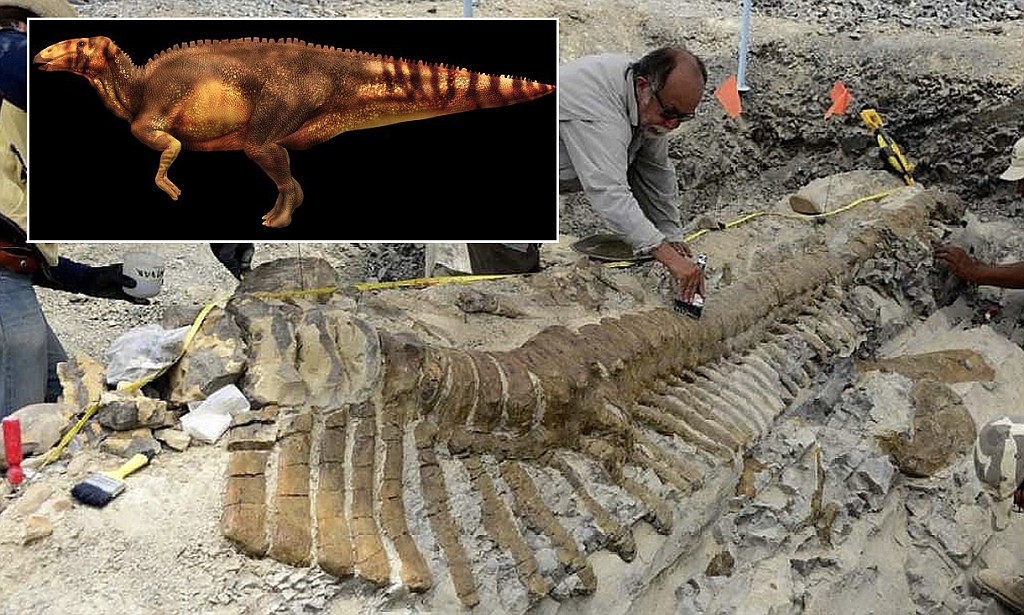The hammer and ruler experiment, often demonstrated as a surprising physics trick, involves balancing a hammer with its handle threaded through a string tied to a ruler, which is then positioned to create a seemingly gravity-defying setup. The system appears to hover or balance in a way that looks impossible, captivating observers. The reason it works lies in the principles of center of mass, torque, and equilibrium, which allow the objects to maintain a stable balance despite their unusual configuration.
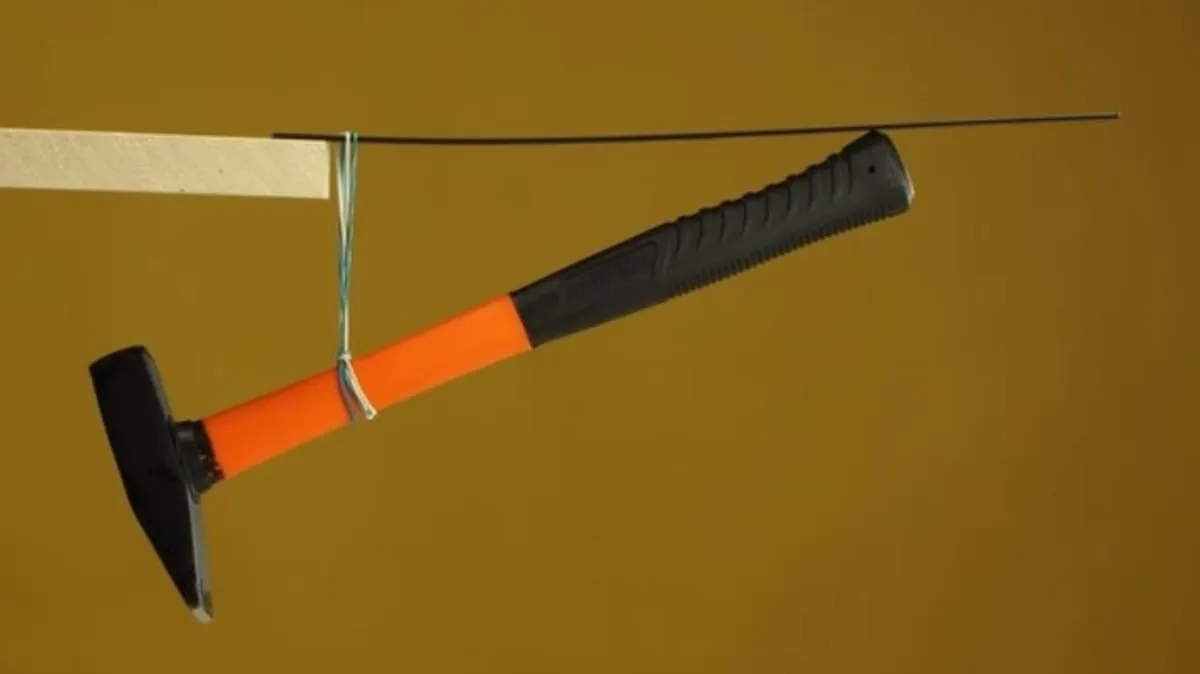
How the Experiment Works
In a typical setup, a string is looped around the handle of a hammer (near the head for stability), and the ruler is placed either under the hammer or threaded through the string, with one end resting on a surface (like a table edge) and the other extending outward. The hammer’s head hangs below the table, and the ruler seems to defy gravity by not tipping over, holding the heavy hammer in place. The arrangement varies slightly depending on the demonstration, but the key is the interaction of the hammer’s weight, the ruler’s leverage, and the string’s tension.
Why It Works: The Physics Explained
Center of Mass:
The center of mass is the point where an object’s mass is effectively concentrated for balance purposes. In this experiment, the hammer’s heavy head lowers the system’s center of mass significantly. When the hammer hangs below the table, suspended by the string, the combined center of mass of the hammer, ruler, and string lies below the pivot point (where the ruler rests on the table edge).
This low center of mass stabilizes the system, much like a tightrope walker’s pole lowers their center of gravity to prevent falling. The string ensures the hammer’s weight pulls downward, aligning the center of mass directly under the pivot, creating a stable equilibrium.
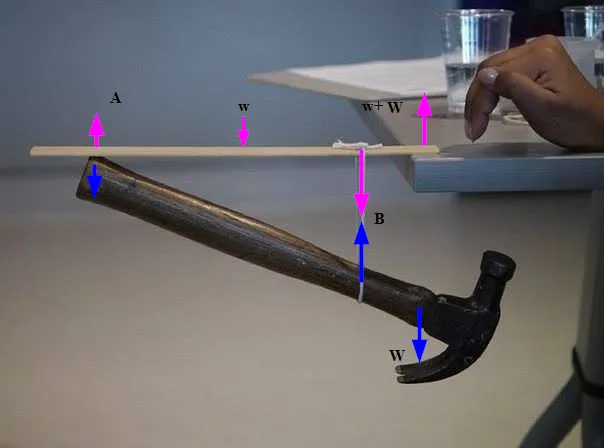
Torque and Balance:
Torque is the rotational force caused by a weight acting at a distance from a pivot point. In the experiment, the hammer’s weight creates a downward force, but the ruler’s position and the string’s tension counteract it. The ruler, partially supported by the table, acts as a lever, with the string distributing the hammer’s weight to create a counterbalancing torque.
The system reaches equilibrium when the clockwise and counterclockwise torques cancel out. For example, if the ruler extends outward, the hammer’s downward pull on one end is balanced by the table’s upward force on the other, with the string anchoring the system to prevent slipping.
Stable Equilibrium:
The setup is in stable equilibrium because any small disturbance (like a nudge) causes the center of mass to shift slightly, but the system naturally returns to its balanced position. The low center of mass ensures that gravity pulls the system back to alignment, much like a pendulum settles at its lowest point.
The string’s role is critical, as it constrains the hammer’s motion, keeping the center of mass aligned under the pivot. This is why the ruler doesn’t tip over despite the hammer’s weight.
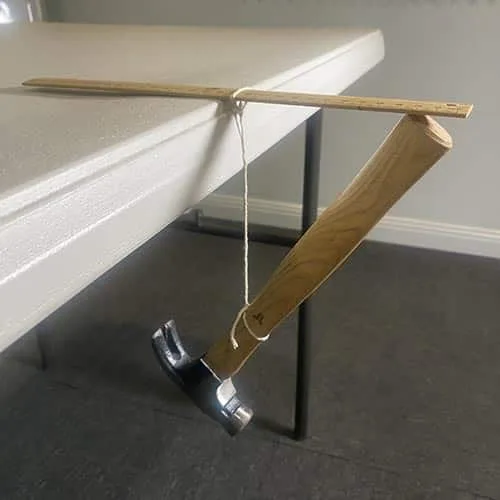
Why It Seems to Defy Gravity
The experiment appears to defy gravity because the heavy hammer hangs precariously below the table, and the ruler extends outward with minimal support, creating an illusion of instability. However, the configuration cleverly distributes forces so that the system’s center of mass remains below the pivot point, ensuring stability. The visual contrast between the heavy hammer and the lightweight ruler amplifies the “impossible” effect, much like a magician’s trick relies on misdirection.
Real-World Analogies
This principle mirrors other examples of balance and stability:
Tightrope walkers use long poles to lower their center of mass, making balance easier.
Suspension bridges distribute weight to keep their center of mass stable, like the string in the experiment.
Ancient architecture, such as the double helix staircase at Château de Chambord, leverages balanced forces for structural integrity, reflecting similar ingenuity.
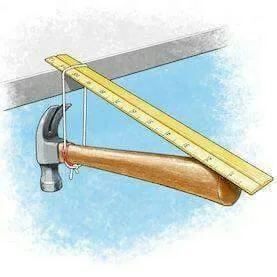
Lessons for Today
Like the Dahomey Amazons’ cornrow maps or the Lamassu’s five-legged design, the hammer and ruler experiment showcases ingenuity in manipulating natural forces. It teaches us:
Creative Problem-Solving: Simple materials can achieve complex results, inspiring innovation in engineering and design.
Understanding Nature’s Laws: Grasping concepts like center of mass demystifies “impossible” phenomena, encouraging scientific curiosity.
Practical Applications: These principles inform modern engineering, from building stable structures to designing spacecraft, like the Space Shuttle Enterprise’s balanced design.
A Gravity-Defying Illusion
The hammer and ruler experiment, far from defying gravity, harnesses it through clever physics. By aligning the center of mass below the pivot and balancing torques, the setup creates a stable, gravity-obeying system that only appears miraculous. Like the Jadeite Cabbage’s artistry or Samir and Muhammad’s symbiotic bond, it reminds us that ingenuity can make the ordinary extraordinary, turning a hammer, ruler, and string into a captivating lesson in the dance of forces that shapes our world.

